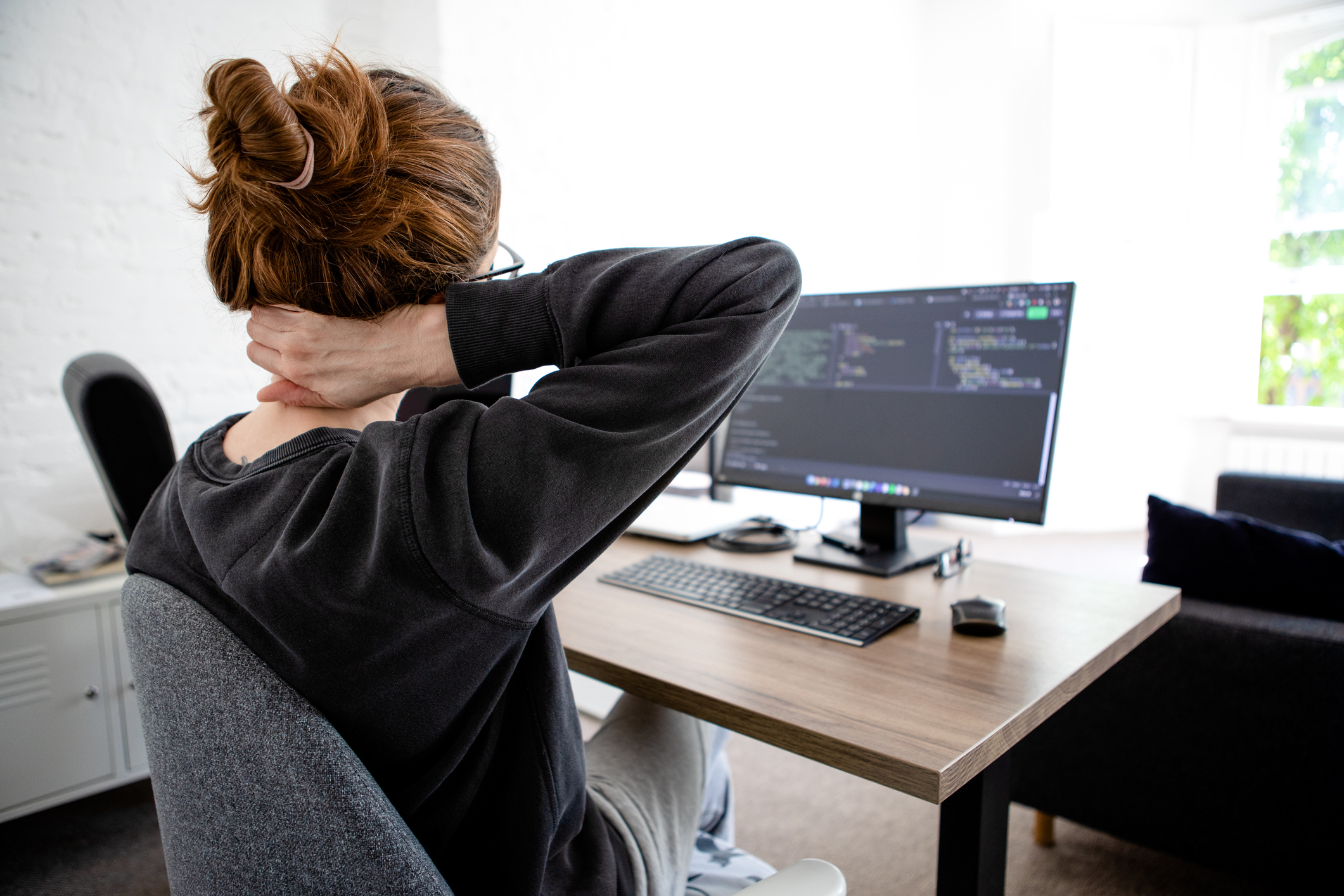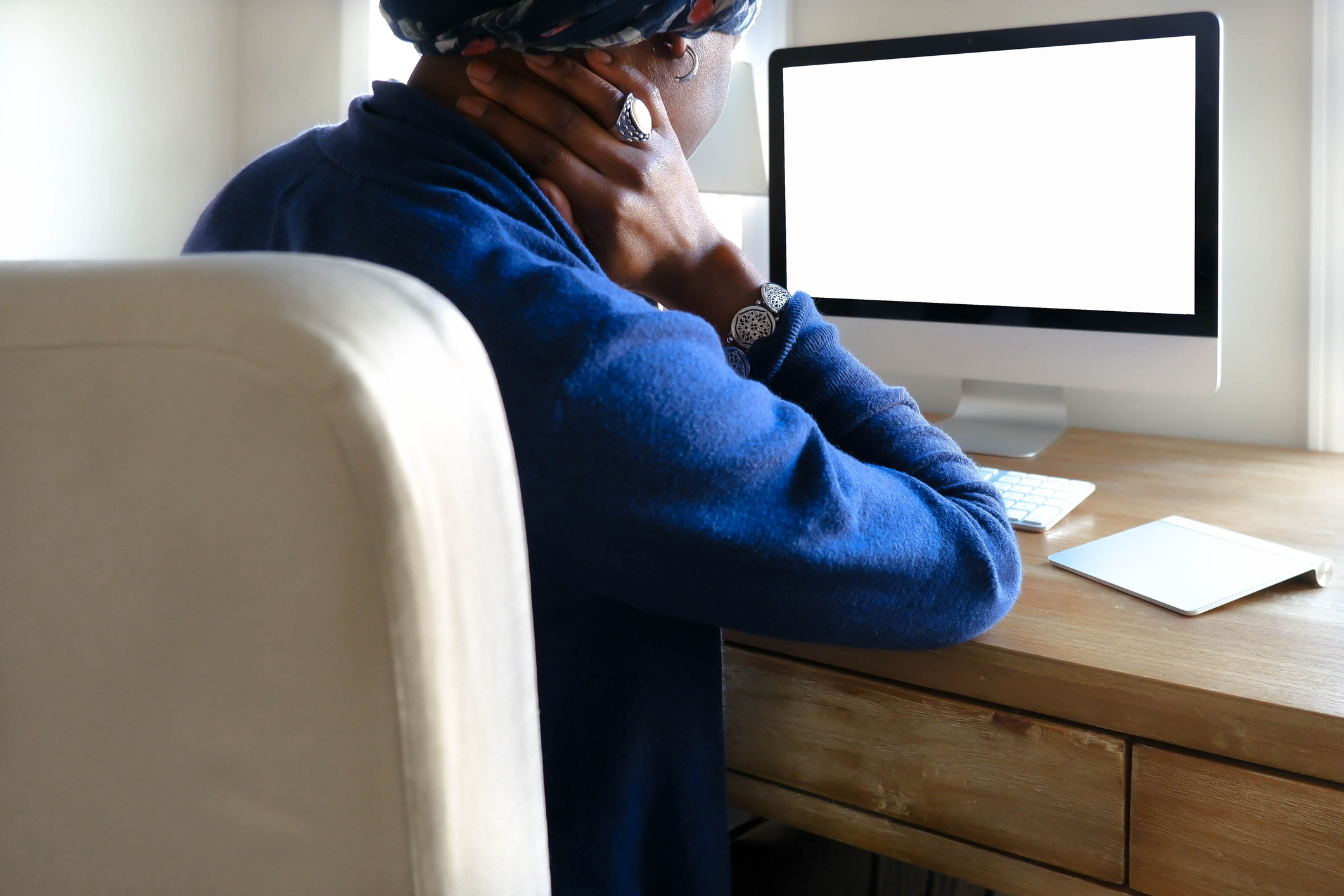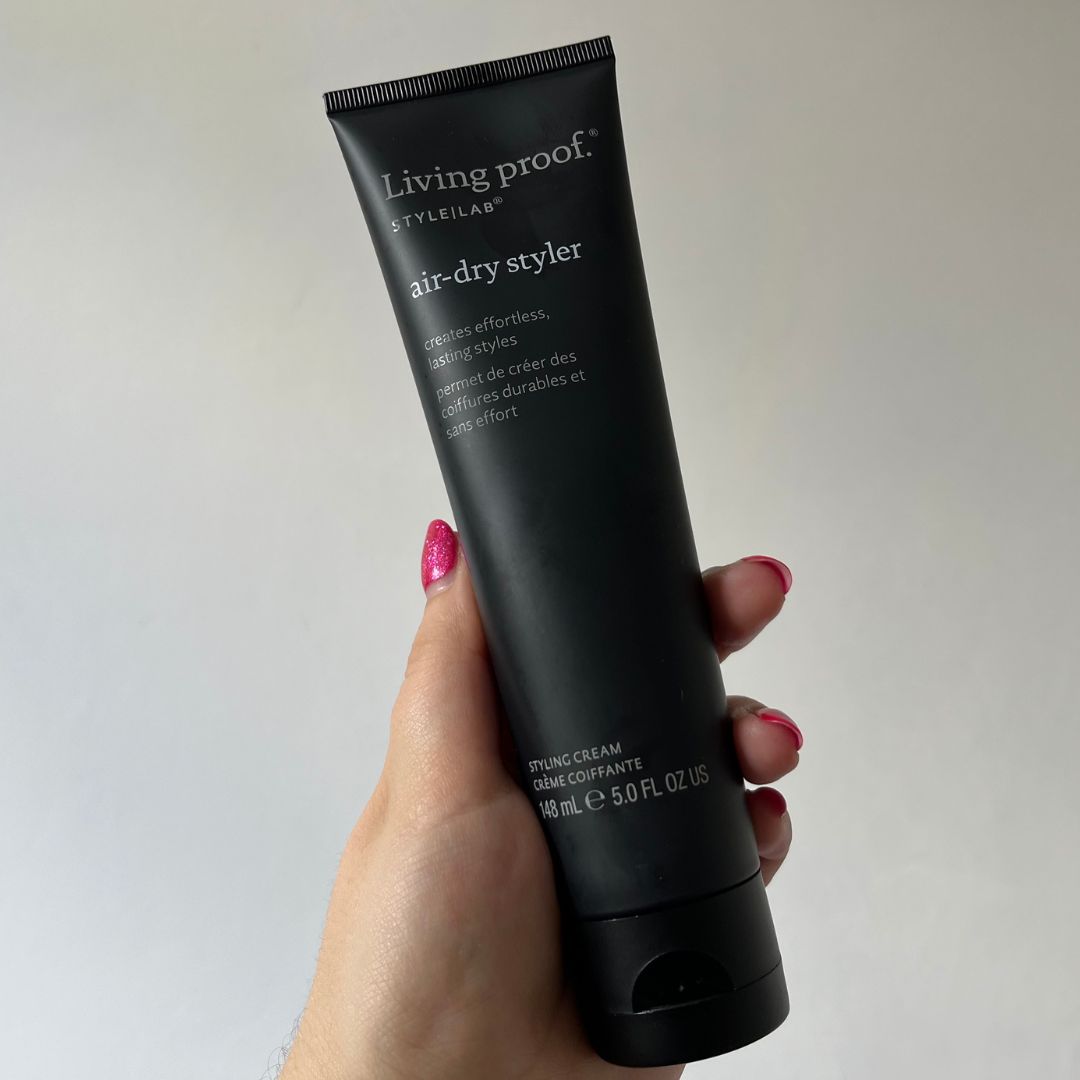Have you developed pandemic posture? Avoid the WFH slump with these pro tips
Constant neck, back and shoulder ache? Yeah, you're not alone.

Constant neck, back and shoulder ache? Yeah, you're not alone.
If you're having a bit of a work from home slump - aren't we all. For many, homeschooling has been a nightmare, adapting to working entirely online has proved challenging, to say the least, and that's before we even get started on work from home posture.
You know, the shoulders hunched, back arched cat-like position you often find yourself slumped over your kitchen table like? Yeah, that one. It's no news that dining tables weren't designed ergonomically or for any long periods of being sat at. And the chairs? Yep, definitely not good for sitting on for upwards of eight hours a day.
So, what's the solution? Buying specifically designed desks and chairs, for many, just isn't a viable option. They may be too expensive, or you may simply not have the space. Instead, keep reading for tips from three physios about how best to protect your neck, back, shoulders, and, well, overall body while working at a dining table all day.
Work from home posture: what is 'pandemic posture'?
The clue really is in the name with this one.
According to chartered physiotherapist at Allied Health Professionals Suffolk Isabelle Bryson, it's the term used to describe how people have been holding themselves over lockdown, when working from home without an adequate office desk set up. "Examples of this could be sitting at your kitchen table, sitting on an armchair or the sofa, or even sitting in your garden chair," she shares.

But Claire Small, clinical director and specialist musculoskeletal physiotherapist at Pure Sports Medicine Canary Wharf, reckons that there's a slightly wider issue at play here.
Marie Claire Newsletter
Celebrity news, beauty, fashion advice, and fascinating features, delivered straight to your inbox!
She explains: "Recent research has shown that one of the biggest problems with the pandemic and WFH is a lack of movement and physical activity," she shares. "So, rather than thinking that bad posture or pandemic posture is the problem, we should be thinking that it is habitual posture that is the issue - that is, not moving or changing position throughout the day."
What they're seeing in clinic is people who have been out for their one hour of exercise a day - as allowed by current restrictions - and then not moving for the rest of the day. Sound familiar? "Staying in the same position to work all day is just not good for us," she emphasises. "We should be trying to break up these periods with physical activity to give our muscles and joints a break and some variety."
What are the risks of developing work from home posture?
A whole load of reasons. Simply, making sure you're moving throughout the day is a form of self-care, as your body needs movement to thrive.
"We need to move for our hearts, our brains, our joint, our muscles, and our mental wellbeing," shares Small. Plus, sitting over a desk without moving can lead to joint pain, muscle stiffness and tightness, nerve irritation, and headaches - not to mention boredom, too.
If you've experienced any of the following, it might be time to reassess your WFH setup or book an appointment with a professional, say both physios.
- Back and neck pain
- Shoulder pain
- Headaches from periods of inactivity
- Stiffness, pain or discomfort
- Hip pain
- Knee pain
- Tendon pain
- Ankle pain
- Foot pain.

5 tips for avoiding bad work from home posture
Know this: Small emphasises that slumping and slouching aren't bad by nature. What is bad is staying slumped and slouched all day. Keep reading for the physio's top tips for making sure you don't slip into this trap.
1. Move… and move regularly
"Keep your body moving and do some simple stretches whilst sitting at your desk," Small recommends.
Do this: Tip your head from side to side, turn your head each way, roll your shoulders around, twist your spine in your chair, but also get up and walk around. Remember to keep doing this throughout the day.
Also, do remember to take regular breaks. This is important. "Get up from your chair, stretch, move around your house, and then see if you can find a different space to work. You’ll be surprised how much this helps productivity too," Small shares.
2. Mix up your exercise routine
Add in some stretching and flexibility sessions to your cardiovascular run or walk. Physiotherapist Lauren Cully reccomends doing mobility stretches and strength training at least two to three times a week.
Not sure where to start? Check out our guides to the best free home workouts, no kit home workouts, and ab toning exercises, while you're here.
3. Asses your workspace set up
If you're still working from a laptop with no monitor, mouse, or keyboard, it's time to change this.
Do this: "If you work on a laptop, try and get a detachable keyboard so that you can have your keyboard and your screen at different heights," recommends Small. You don't need to use it all the time if it’s not possible, but it will provide variety to your posture and can help with not straining your wrists, she explains.
4. Seating positions
Acknowledge how you're sitting and start making a mental note of what you could change. Do use your chair for support - that's what it's there for.
Do this: "Make sure you sit back in your chair so that your back is supported and you are relaxed. We are not meant to hold ourselves rigidly upright, all day, every day. This would be like walking around with your fist clenched all day – unnatural," shares Small.
5. Multitask
This one could actually be fun, if you put your mind to it.
Do this: "When you take a phone call or a meeting that doesn't require video, try standing up, walking around, sitting in a different chair, lying on your bed, or sitting crossed legged on the floor," Small advises. Why? Well, this will help your body loosen up, and can reduce some of the aches and pains that come with sitting still, she shares.
Final note: remember, anything really is better than nothing. If the above seems too much to add to your daily routine, then just try a handful of changes to begin with. Every little helps.

Ally Head is Marie Claire UK's Senior Health and Sustainability Editor, nine-time marathoner, and Boston Qualifying runner. Day-to-day, she heads up all strategy for her pillars, working across commissioning, features, and e-commerce, reporting on the latest health updates, writing the must-read wellness content, and rounding up the genuinely sustainable and squat-proof gym leggings worth *adding to basket*. She also spearheads the brand's annual Women in Sport covers, interviewing and shooting the likes of Mary Earps, Millie Bright, Daryll Neita, and Lavaia Nielsen. She's won a BSME for her sustainability work, regularly hosts panels and presents for events like the Sustainability Awards, and is a stickler for a strong stat, too, seeing over nine million total impressions on the January 2023 Wellness Issue she oversaw. Follow Ally on Instagram for more or get in touch.
-
 Jonathan Anderson is going to Dior Men
Jonathan Anderson is going to Dior MenHis debut collection will be this June
By Mischa Anouk Smith
-
 I'm a 2025 bride and these are the best affordable wedding dresses I've found
I'm a 2025 bride and these are the best affordable wedding dresses I've foundLess than £1,000 but still the height of chic
By Sofia Piza
-
 I haven't worn my hair completely natural for years, but this air-dry styling cream has made me love my waves again
I haven't worn my hair completely natural for years, but this air-dry styling cream has made me love my waves againI will never be without this
By Amelia Yeomans